


Britten Norman BN2 - a British success story
At 6:45 am on 11 September 1970 the prototype BN Trislander made its first flight. To commemorate this event we reflect on the history of the company that built it and the story behind how and why the aircraft was developed.
Let’s begin the Britten-Norman story with a short quiz
Which British commercial aircraft has had the largest production run?
Which British commercial aircraft has the longest production life?
If you answered the Britten Norman BN2 to both these questions then pat yourself on the back. To date over 1,300 BN2 aircraft have been built and it has been in continuous production since 1965 when the prototype Islander first took to the air from Bembridge airfield on the Isle of Wight. The Islander is still being built to order, but now flies from Lee-on -Solent airfield in Gosport, Hampshire.
John Britten and Desmond Norman were aeronautical engineers who began their careers with de Havilland at Hatfield. In 1954 they formed their own company to modify and build aircraft. Their first successful enterprise was to buy redundant military de Havilland Tiger Moth trainers and to refit them as crop sprayers using the innovative Micronair rotary atomiser dispersal system, which they had helped design. This was a profitable venture as the aircraft were cheap to buy and operate, pilots were familiar with the aircraft and it had few competitors. Around 100 conversions were made. Developments of the Micronair system are still used in crop sprayers to this day.

In 1963 Britten and Norman turned their attention to the small feeder liner/island hopper aircraft having identified a requirement currently served by old inefficient aircraft with no obvious modern replacement. They had the good sense to develop a small close-knit and very talented design team able to transform rough drawings (yes, on backs of envelopes!) into detailed structural blueprints. In 9 months the aircraft went from a series of sketches to a complete aircraft; a remarkably short development cycle. In June 1965 the prototype Islander took to the Isle of Wight skies and few weeks later was exhibited at the Farnborough air show.

The Islander was one of those things that prove the old adage ‘If it looks right, it is right’. Very few changes needed to be made to the prototype before it went into production. Indeed the Islanders being produced today are still instantly recognisable. The initial design was so good that even though engines, instruments and materials have been brought up-to-date the aircraft still looks the same.


The BN2 Islander was a 10-seat high-wing aircraft with a fixed undercarriage, powered by two Lycoming flat six- piston engines. It was robustly built as a Short Take Off and Landing (STOL) aircraft being capable of using grass, gravel, dirt, sand or snow airstrips. The first customers were both British, Loganair in Scotland and Aurigny in the Channel Islands, but the Islander went on to fly in virtually every country. It was extremely popular in the Caribbean, South and Latin America, USA and Canada, Africa, Australia and New Zealand and the Asia and Pacific regions. Almost 1,300 have been built and over half are still flying today.
Aurigny Air Services in the Channel Islands were an enthusiastic operator of the Islander on their routes from Guernsey, Jersey and Alderney. The only issue they had with the aircraft was that it was not big enough, carrying only nine passengers, so when in early 1970 Britten Norman proposed a larger aircraft, Aurigny were the first customer to order the new aircraft. Their Managing Director Sir Derrick Bailey had backed the original Islander concept with the remark, "You build the Islander and I'll buy it " and he repeated the statement with the new aircraft which would eventually be named the Trislander.
The ideas for a larger aircraft had been bouncing around in the heads of Britten and Norman for quite a while and they had tried stretching the original islander prototype, but the single engine performance for the larger aircraft was marginal to say the least! More power was needed and after much thought, the concept of ‘more than two but less than four’ was adopted. This approach was largely driven by BN not being flush with money. A new aircraft or even a new wing with four engines was not practical. It was also important to use as much of the existing airframe as possible and to keep the size and weight down so that the new aircraft could continue to be operated by a single pilot. Why pay a co-pilot when you could carry a fare-paying customer!
A three-engined propeller-driven aircraft was nothing new as several types had been built in the 1930s by Ford, Junkers and Savoia-Marchetti to name but a few. All had the third engine installed in the nose. This was not possible in the Islander as there was insufficient ground clearance, so the decision was taken to install the engine in a redesigned tail. A rough drawing was made in February 1970 in Chicago while Britten and Norman were on a US sales tour. On their return to Bembridge these drawing were handed to the design team under the leadership of John Berryman and engineered in a remarkably short time so that metal could be cut in July. Stories of design ideas and sketches discussed over a drink at the Propeller Inn at Bembridge being incorporated into the Trislander prototype the next day are not too far from the truth. The resulting aircraft received a seven-foot stretch in the fuselage and a three-foot extension to each wing. The tail unit was completely new. To make certification as smooth, swift, and inexpensive as possible, the new aircraft retained the BN2 model number as 80 per cent of the airframe was identical. The Mark III suffix was added and the Trislander was born.
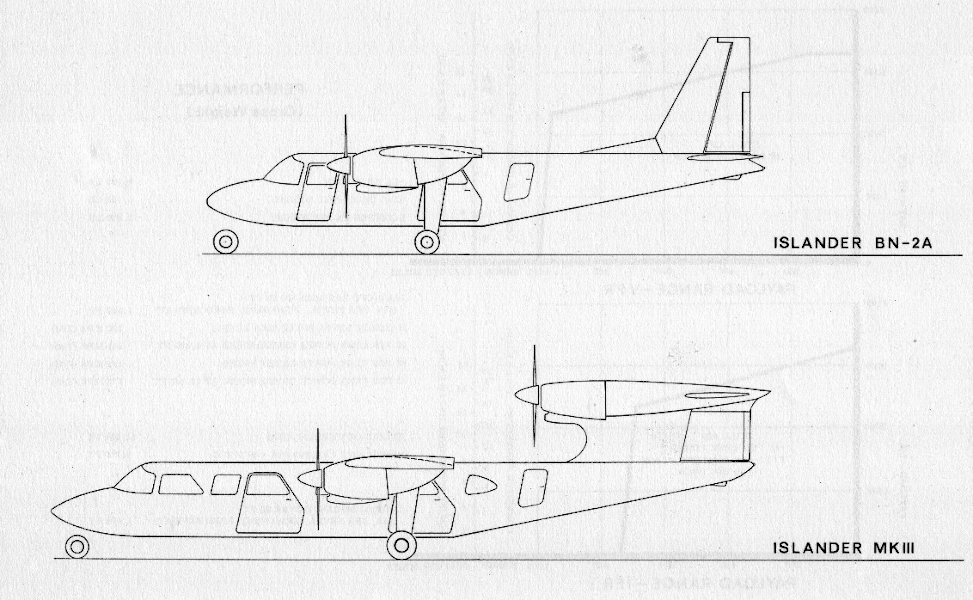
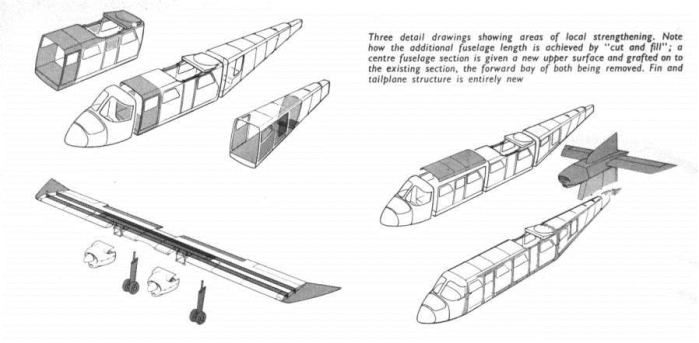
When the prototype took to the air for the first time on 11 September, Britten and Norman were at the controls. The first flight lasted an hour and proved the design required few changes. The Trislander was not the only three-engined aircraft to take to the skies in 1970 as both the Lockheed Tristar and the McDonnell Douglas DC10 also took flight that year.
The new aircraft with its multiple doors and box-shaped fuselage looked a little like a railway carriage and according to Norman the aircraft flew “as if it were on rails”. After refuelling, the aircraft was taken straight up for a second flight, followed by an Air Registration Board evaluation trip after which it flew direct to Farnborough for the 1970 SBAC Show. The novel three-engined configuration caused a sensation when it made its unexpected appearance at Farnborough. Few aircraft have ever had such a short gestation period.
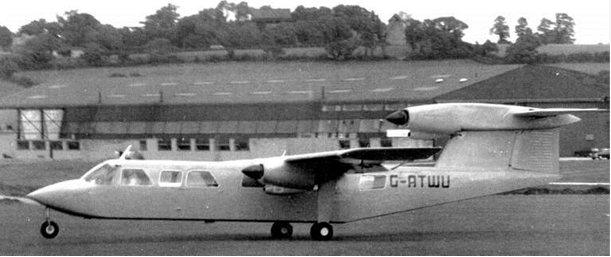
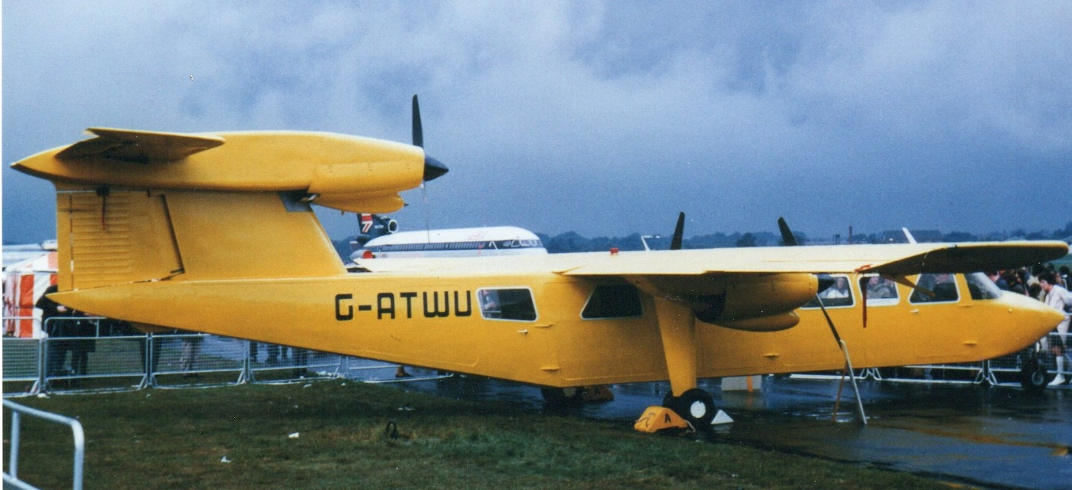
Following further test flying it was decided to extend the fin above the engine to increase stability, but no other major changes were necessary and the aircraft was successfully certified by the CAA and production began.
Here I would like to relate a story that I was told, it may or may not be true, but I would like to think that it is!
After one of the certification flights the CAA inspector commented that he was happy with the aircraft handling but that it would be necessary for the pilot to be able to visually check the tail engine whilst in flight. He then disappeared for lunch, to the Propeller Inn perhaps? On his return he found that the BN engineers had affixed a rear view mirror to the fuselage above the pilot’s window. The CAA inspector duly undertook another flight and was satisfied that this ‘quick fix’ provided the necessary view of the rear engine, and so signed the aircraft off. Everyone was happy with this quick thinking except the BN engineer who on returning to his car that evening found that one of his wing mirrors was missing! Take a look at the mirror on the port side of G-BEVT and draw your own conclusions about the truth of this anecdote.
The first Trislanders were assembled as Bembridge using existing Islander fuselages already on the assembly line, but later examples were built as Trislanders from the start. For their ingenuity in creating the new aircraft BN received the Queen’s Award for Industry in 1970. Aurigny were the launch customer with Loganair being the second, neatly reversing the roles the two carriers had played with the launch of the Islander. So it was that on 29 June 1971 the first production Trislander entered service with Aurigny.
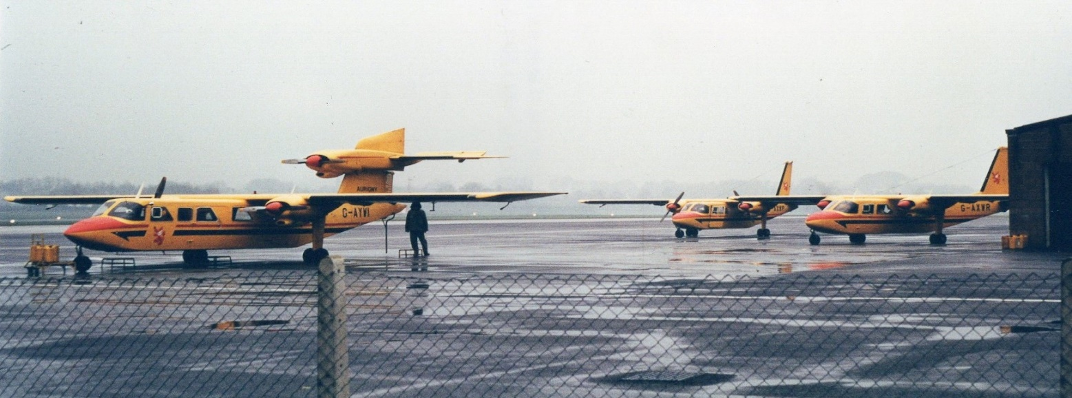
You will notice from this photograph that the original Trislanders kept the short nose of the Islander. The distinctive long snout of the later aircraft was added to increase the baggage capacity, but also improved the balance and stability of the aircraft
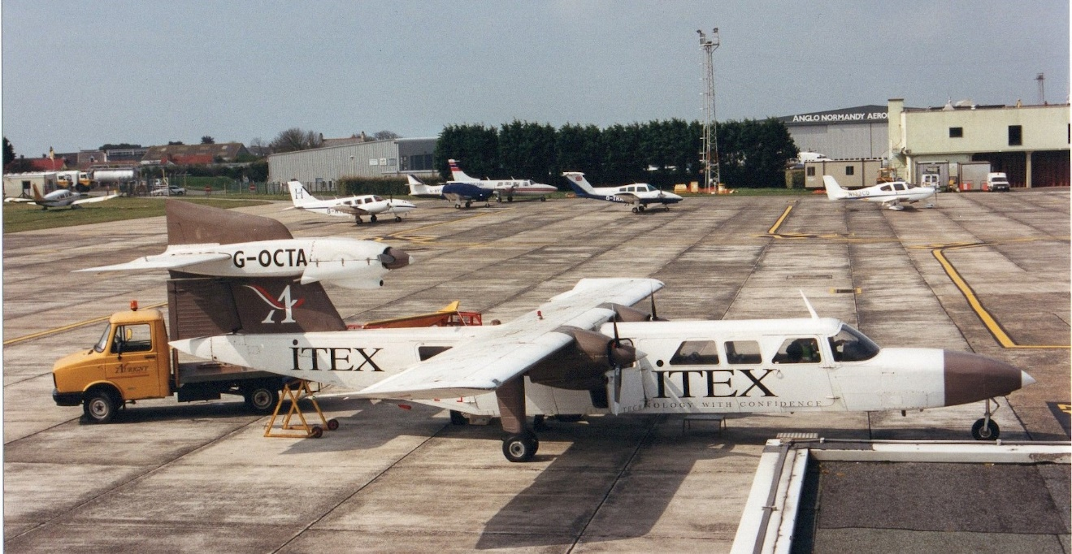
In 1973 Britten Norman finally succumbed to the constant lack of funds and went into administration even though they had a healthy orderbook. However, seeing an opportunity to acquire a successful design and having a skilled workforce currently under-employed, the Belgian company Avions Fairey bought BN and so began a six-year relationship as Fairey Britten Norman (FBN). Very little changed at Bembridge but a new production line was set up at Gosselies in Belgium to build both Islander and Trislander aircraft. Indeed some people refer to the Trislander as the Belgian DC10, totally ignoring its Isle of Wight heritage.
In 1978 Fairey themselves ran into financial difficulties and this time the BN saviours came from Switzerland in the form of Oerlikon-Bührle who owned the Pilatus company and so the name changed again to Pilatus Britten Norman (PBN). However, although this saved the Islander the same could not be said for the Trislander, PBN had no interest in the low volumes being built and in what, with hindsight, could be said was a short-sighted decision, production was stopped in 1981 with just over 80 airframes being built, although not all were completed. The last production Trislander was sold from Bembridge in 1984 and no further Trislander production has been undertaken by B-N since that time. Today there is little doubt that many more Trislanders could have been sold had production continued.
In 2000 the company was brought back into private hands and renamed Britten Norman Group, becoming the sole independent commercial aircraft producer in the UK. The company headquarters remains at Bembridge although the Islander aircraft are now manufactured to order at Lee on Solent in Hampshire.
So what of the 70 plus Trislanders that actually flew? Well, they have served various operators across all the continents except Antartica. They have carried millions of passengers and countless tons of cargo, landed on tarmac, dirt, grass, gravel, sand, coral and snow runways. Babies have been born on board and recently one served as a mobile polling station in Guyana, South America.
Aurigny Air Services were the biggest operator, having had 15 pass through their hands over the 47 years that they operated them (1971 to 2017), so they must have thought they did a good job. In 1970 they decided the larger Trislander was better and in 1998 when they needed another airframe they came to the same conclusion, they acquired one of the unused Trislander kits. This was assembled by an associated company Anglo Normandy Aero Engineering and with parts from an existing Trislander became the basis for the only ‘new’ Trislander since the B-N production line was shut down in 1981.
Perhaps their most famous Trislander was Joey, this had been a pet name used by Channel Islanders for the Trislanders which they saw as their own special aircraft. A series of successful children’s books was written by a local author telling the story of the little yellow aeroplane and its adventures and Aurigny re-registered one of their aircraft and painted a face on it. This aircraft flew until 2015 and is now preserved on Guernsey at the Oatlands theme park.
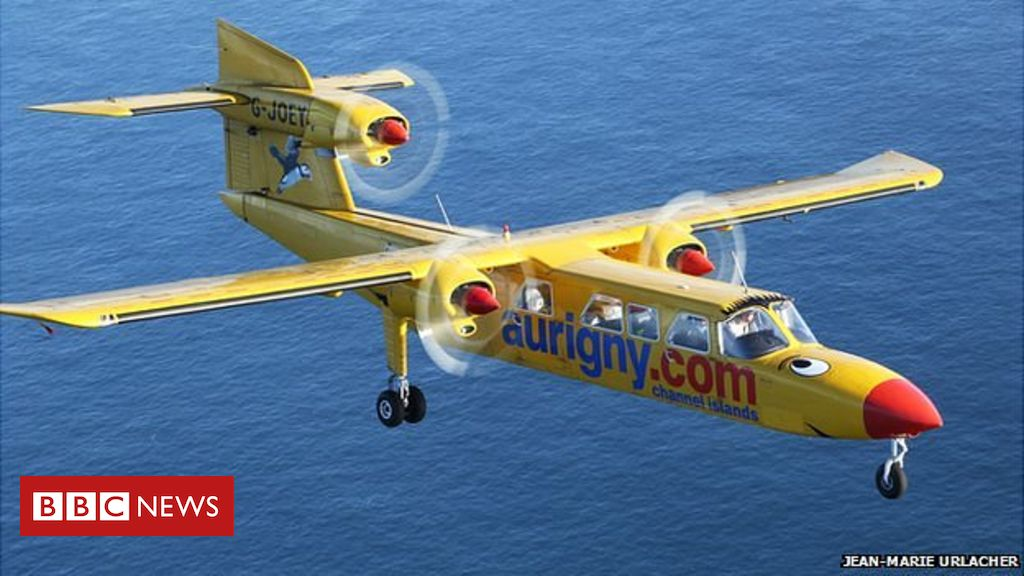
So what or our own G-BEVT? It was built in 1977 but not sold until 1983 when it entered service with Aurigny who were its only operators for 35 years. During this time it managed over 86,000 take off and landings, including one on St Brelade’s beach on Jersey following engine problems on take-off. It wore five different colours schemes over the years ending up with Puffin as we display her now.
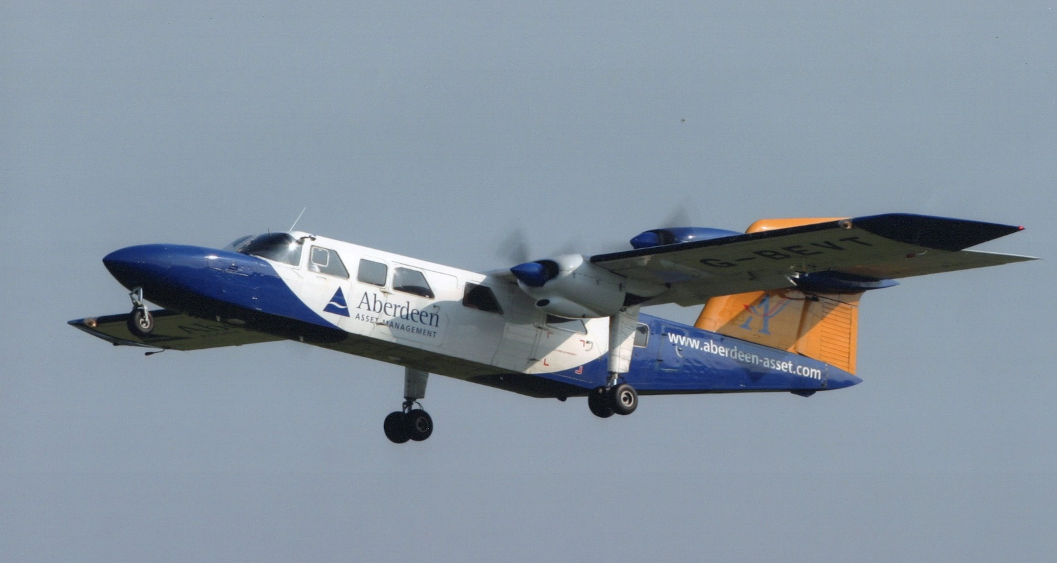
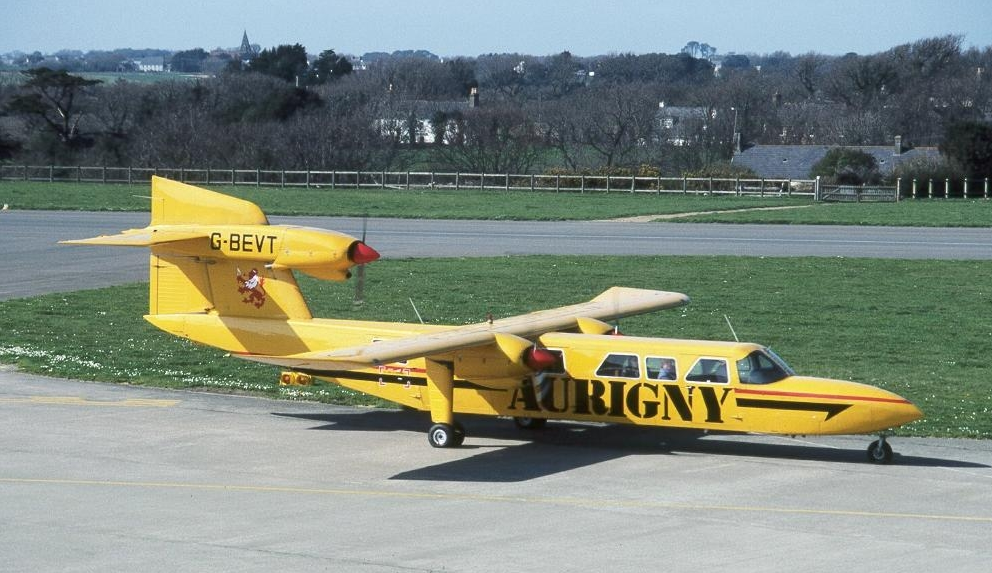
G-BEVT was the last Trislander operating in Europe when she was retired from service in 2017 and donated to Duxford Aviation Society. She spent her final years operatiing the Guernsey to Alderney route where her STOL capabilities were useful. She could carry a full load of 17 passengers whereas the replacement Dornier 228 is limited by weight to only 15 despite being a larger aircraft. Another advantage was the ability to remove the first three rows of seats to take a stretcher for medical evacuation. The Dornier is not able to perform this role.


But this was not the end of the Trislander’s flying history. Several are still active in the Caribbean and South America. One operator in the Caribbean, Anguilla Air Services decided in 2019 they needed a larger aircraft, looked around, checked various options and, like Aurigny before, decided they needed a Trislander! They found one in Vanuatu in the Pacific where it had not flown for two years. A group of engineers and pilots were sent over and three weeks later they island-hopped across the Pacific Ocean, (including an 8.5 hour flight from Hawaii to California, with an extra fuel tank in the cabin), then across the USA to the Caribbean. Operation has been so successful that they have found another aircraft in Fiji and will repeat the process

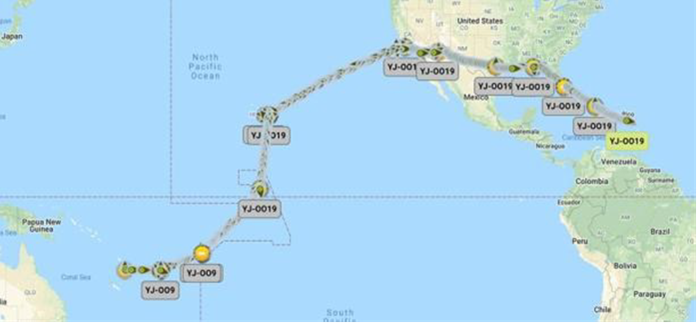
The editor would like to thank the Britten Norman Aircraft Preservation Society (BNAPS) for their help in preparing this article.
BNAPS are currently restoring the third production Islander G-AVCN, the first I delivered to Aurigny in 1967. The aircraft is nearing the end of its restoration back in its birthplace of the Isle of Wight. It is hoped it will be permanently displayed on the island in 2021.

BNAPS is a Registered Charity, No. 1100735, set up to "preserve the history and aircraft of Britten-Norman with the support of members’ subscriptions, sponsorship and donations". More supporters are always welcome and can make contact via BNAPS Membership Secretary, Rita Edgcumbe at sales@bnaps.org.uk.
Registered Charity No. 285809